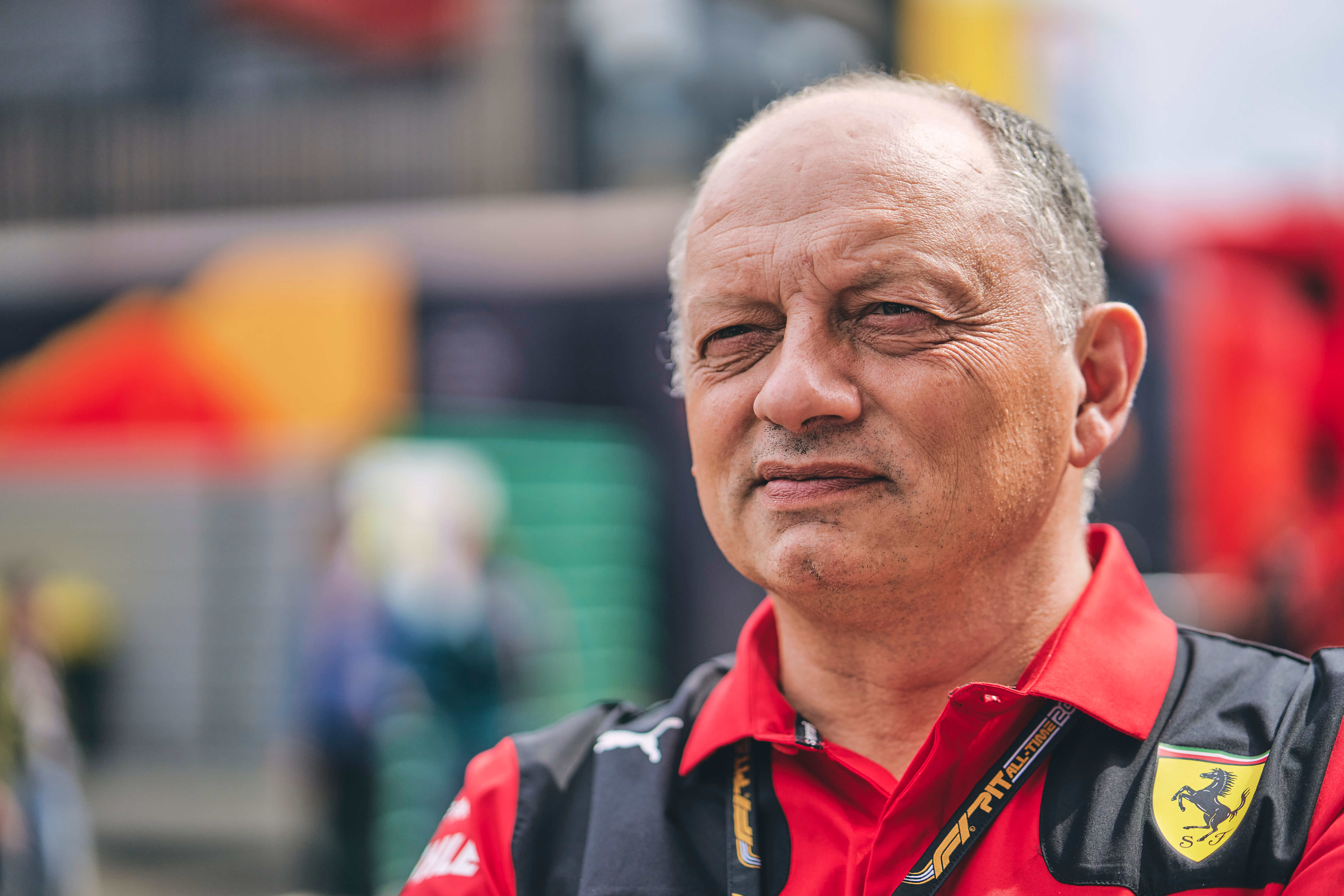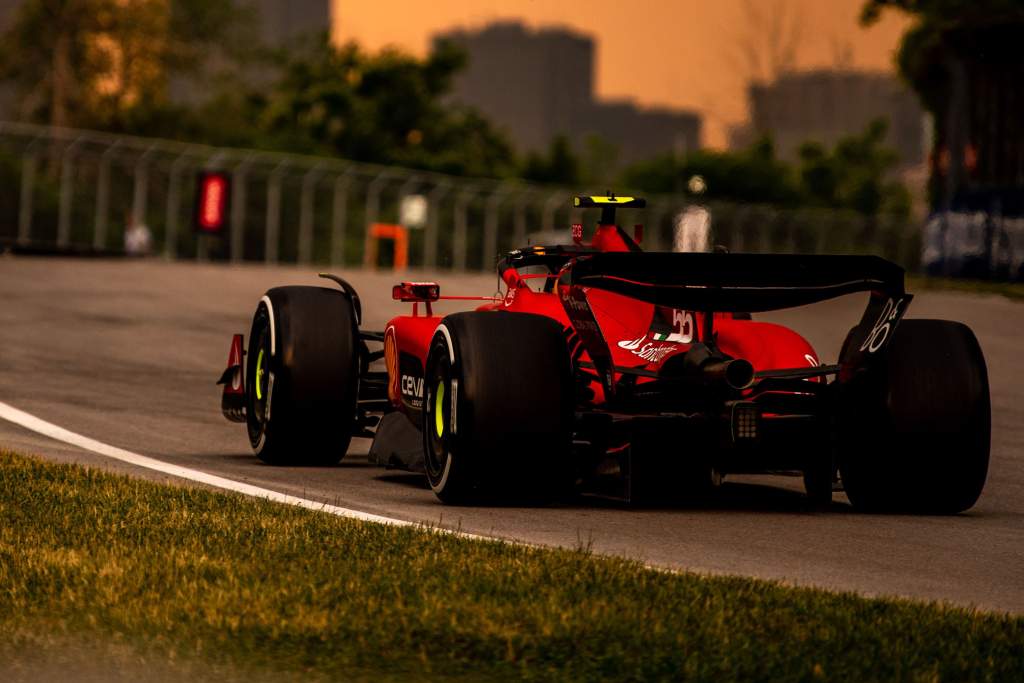Up Next

Ferrari is open to the kind of 2026 Formula 1 engine rule tweak that Red Bull is advocating and that Mercedes has emphatically ruled out.
F1’s 2026 engine regulations, with a split in internal combustion and electrical power output of around 50% each, were signed off in August last year, prompting six manufacturers to sign up – the most F1 has had since 2008.
In addition to Ferrari, Mercedes and Alpine (Renault), the new rules brought Audi in as a works team, prompted Ford to strike a deal with Red Bull’s new Powertrains company, and played a part in Honda committing to a new project with Aston Martin.
But the chassis rules to complete the 2026 package are still being defined, with an intention to make the cars lighter if possible and introduce active aerodynamics so wing levels can change on straights.
Red Bull has publicly raised concerns about the 50/50 split in power between electric and internal combustion and wants a reduction in the electrical power output, with team boss Christian Horner Horner arguing a 5-10% swing could have a “significant effect”.
Mercedes boss Toto Wolff, who has a fractious relationship with Horner, said there is “zero chance” F1 could change the rules now that the manufacturers have signed up.

However, Ferrari team boss Fred Vasseur has said that a small change to the combustion/electric power ratio is doable, if there is conclusive proof that there is a problem to rectify.
Speaking to select media including The Race on Thursday ahead of the British Grand Prix, Vasseur said: “First, I think the most important is to agree on what could be the speed trace [an accurate simulation of 2026 performance].
“Then if we worry about the fact that we would have to lift off early or to so-and-so – to change something marginally we can change something.”
Asked by The Race if it is too late given the rules have already been agreed and manufacturers have signed up, Vasseur said: “No, we have time to fine-tune.”
He said that whether the split is 50-50 or 55-45, “it’s not a game changer into the development of the engine”.
And in another separate answer, Vasseur added: “It’s early enough to make a small change.
“And the impact on the speed of plus or minus 5% of energy coming from the ICE [internal combustion engine], is mega.
“But we don’t need to come back to 20% [electric, as under the current rules].”

Horner has previously claimed that the FIA is conducting its own due diligence on the matter and that “certain teams share very similar opinions to that of our own”.
He has been pushing this message in private in F1 Commission meetings, although some of Red Bull’s rivals felt he was banging this drum solo, and it has been indicated it is desperately unlikely F1 and the FIA will ratify a fundamental change to the engine rules like reducing the electrical power output.
But Vasseur said he believes it is “very difficult to have a clear picture” at the moment because all estimates are “just full of assumptions”, and believes the priority should be to establish some key parameters “and then what we have to change to try to improve the show, not to start in the opposite way, to complain before to do the exercise”.
“We don’t know about the size of the tyres,” he said. “We don’t know about the grip of the tyres. We don’t know about the level of downforce. We don’t know about the level of drag. We don’t know how much DRS.
“We don’t know. And we are making speed traces [when] we don’t know.
“It’s why we have to sit down together to try to show that this one is right, this one is wrong, and to try to build up something together. I want to be optimistic.”
The alleged concern about the 2026 package is essentially that the car will not be able to recharge the battery enough over a lap to maintain consistent deployment.
One solution to this could have been for F1 to switch to harvesting energy from the front axle, not just the rear.

But Vasseur reckoned this would have just compounded F1’s biggest problem: car weight.
“You have positives and negatives [of every idea] and the main complaint from the paddock is the weight of the car,” he said.
“If you start to have energy recovery on the front axle with the driveshaft and so on, you are adding 30kg on the car minimum.
“We have to try to stay positive and constructive and to fine-tune the solution, more than to be negative.
“It’s always easy to say, ‘OK, it would be much better to do this’. But if you don’t have a look at the negative effect, for sure it’s much better.
“The main issue for me today is the weight of the car. For the show, to damage the tyres, and for the speed.”
One of Horner’s arguments for reducing the electric part of the power unit is that using sustainable fuels means F1 can lean more on the V6 while still pushing the right message.
But Vasseur said it is clear that hybrid power units is the direction F1 must follow to retain automotive relevance, and by extension be of interest to manufacturers.
“It’s a discussion that the big bosses of the OEMs had one year ago or two years ago in Monza,” he said.
“We are following the paths of the industry. They are going more and more on the hybrid with high level of electricity and we are taking this direction.”





